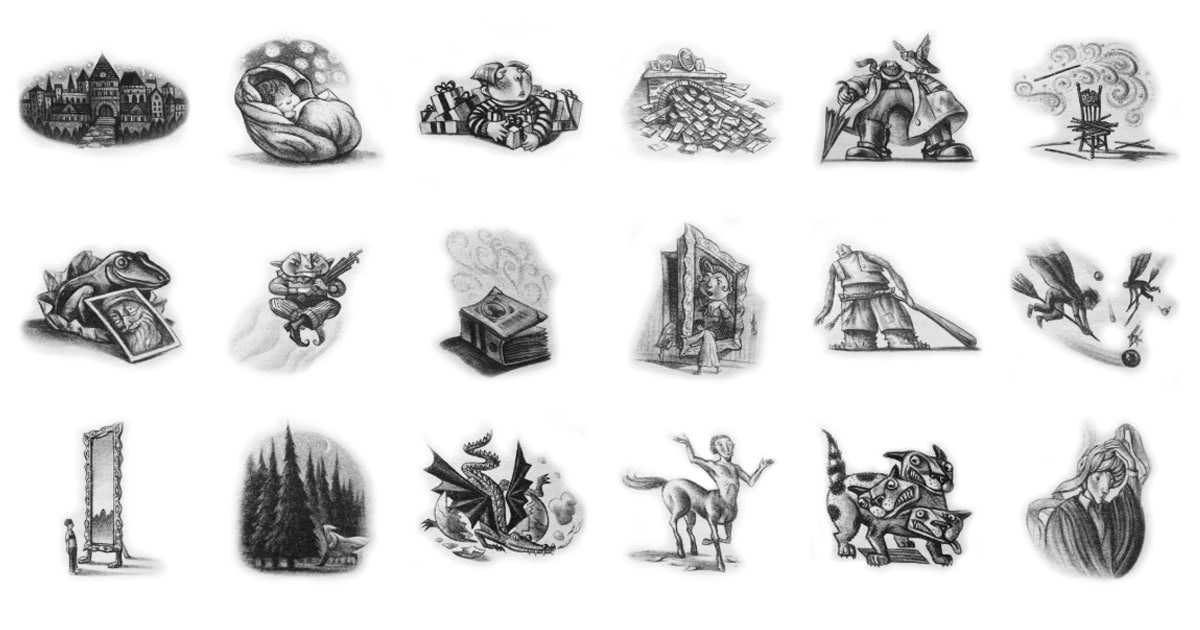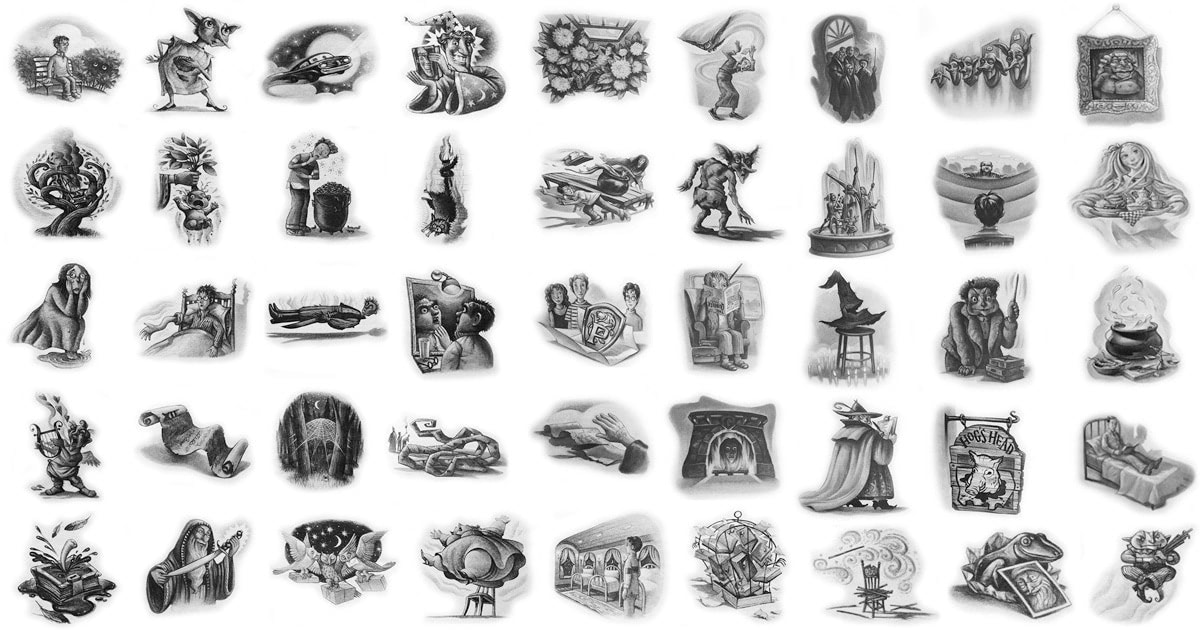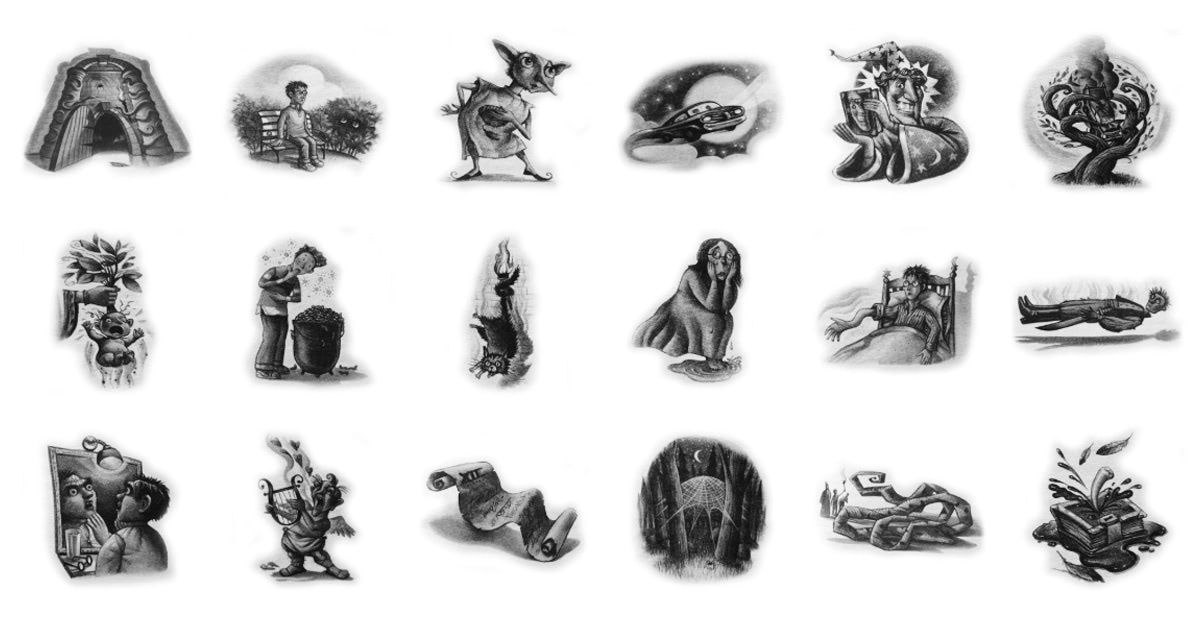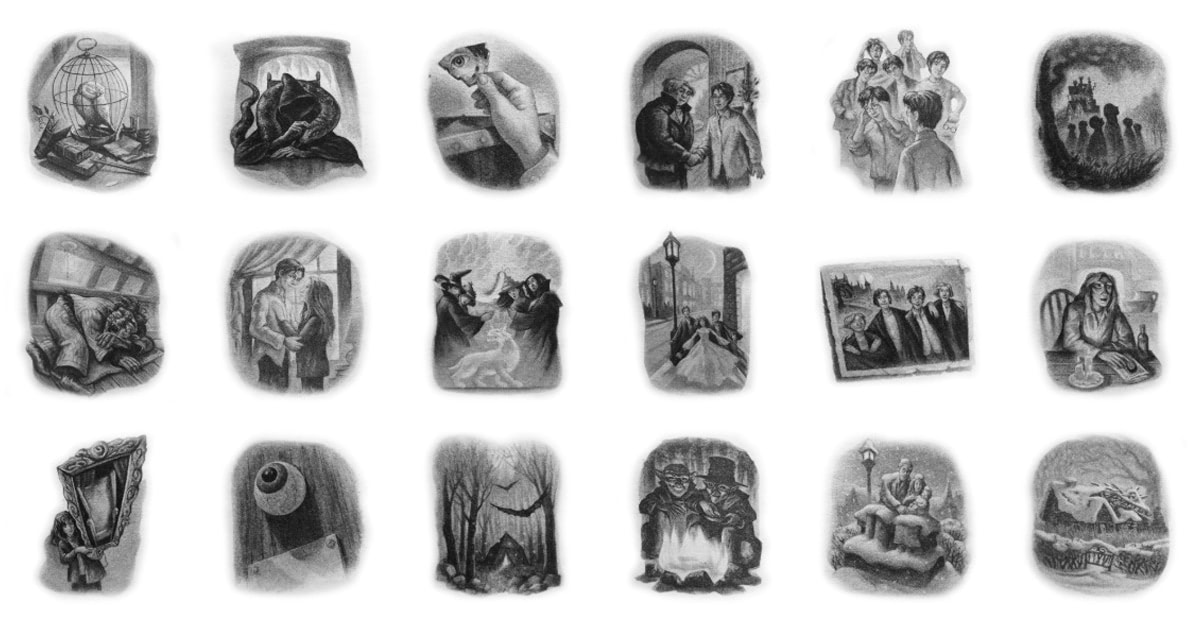Immerse yourself in the captivating world of Harry Potter chapter art, where stunning illustrations bring the beloved characters, magical creatures, and enchanting settings to life. From the whimsical compositions to the intricate symbolism, these artworks not only enhance the reading experience but also provide a deeper understanding of the themes and motifs that define the iconic series.
Delving into the design elements, we uncover the masterful use of composition, color schemes, and perspective to convey the narrative. The illustrations are rich in symbolism and imagery, hinting at future events and enhancing the emotional impact of the story.
Harry Potter Chapter Art Design Elements

The chapter art in the Harry Potter series plays a crucial role in enhancing the narrative and immersing readers in the magical world. These illustrations are meticulously crafted to convey key moments, characters, and themes through a combination of composition, color schemes, symbolism, perspective, and framing.
The intricate chapter art in the Harry Potter books captivated readers with its whimsical and evocative illustrations. However, if you’re seeking a more analytical approach to genetics, consider exploring the comprehensive chapter 10 dihybrid cross worksheet . This resource provides a structured framework for understanding the principles of dihybrid crosses, complementing the imaginative artistry of Harry Potter’s chapters with scientific rigor.
Composition and Color Schemes
The compositions of the chapter art often feature dynamic and engaging arrangements, drawing the reader’s attention to focal points and creating a sense of movement and depth. The use of contrasting elements, such as light and dark, foreground and background, and warm and cool colors, adds visual interest and highlights important aspects of the story.
The intricate artwork that adorns the chapters of the Harry Potter series has captivated imaginations for decades. From the iconic Hogwarts crest to the whimsical illustrations of magical creatures, these images have become synonymous with the beloved fantasy world. While the chapter art of Harry Potter is a testament to the power of imagination, it also invites us to explore other realms of fantasy and adventure.
For those seeking a new chapter in their gaming journey, the chapter 3 map fortnite offers a vast and immersive world to discover. With its sprawling landscapes, hidden treasures, and epic battles, Fortnite’s chapter 3 map promises an unforgettable adventure that will keep you spellbound.
Symbolism and Imagery
The illustrations are replete with symbolic and evocative imagery. Animals, objects, and characters frequently represent deeper meanings, foreshadowing events, or reflecting the inner struggles and emotions of the characters. For example, the recurring motif of the phoenix symbolizes rebirth and resilience, while the Dementors represent fear and despair.
Perspective and Framing
The perspective and framing of the chapter art play a significant role in shaping the reader’s experience. By altering the viewpoint, the illustrator can create a sense of intimacy or distance, convey the character’s emotions, or emphasize the scale and grandeur of the setting. The use of close-ups, wide-angle shots, and aerial perspectives adds variety and depth to the storytelling.
Thematic Interpretation of Chapter Art

The chapter art in the Harry Potter series is not merely decorative; it serves as a powerful tool to convey the themes and motifs that permeate the narrative. Through the skillful use of foreshadowing and symbolism, these illustrations provide subtle hints at future events, enhancing the reader’s experience and deepening their understanding of the story.
Symbolism and Foreshadowing
The chapter art often incorporates symbolic elements that foreshadow key plot points or character developments. For instance, in the chapter “The Mirror of Erised,” the titular mirror is depicted as a shimmering, enigmatic object, reflecting the viewer’s deepest desires. This foreshadows Harry’s later encounter with the mirror, where he confronts his own desires and the potential dangers of self-obsession.
Emotional Impact
Beyond their narrative significance, the chapter art also plays a crucial role in shaping the emotional impact of the story. The haunting imagery in the “Dementor Attack” chapter evokes a sense of fear and hopelessness, mirroring the emotional turmoil experienced by Harry and his fellow students. Conversely, the whimsical and heartwarming illustrations in the “Christmas Feast” chapter create a sense of joy and camaraderie, reflecting the warmth and festivity of the holiday season.
Enhancement of Reader’s Experience
By visually representing key themes and foreshadowing future events, the chapter art in the Harry Potter series enhances the reader’s experience in several ways. It stimulates the imagination, fostering a deeper connection to the story and its characters. It also encourages rereading, as readers can discover new layers of meaning and symbolism upon subsequent visits to the text.
Cultural and Historical Context of Chapter Art

The chapter art in Harry Potter reflects the rich cultural and historical tapestry that underpins the series. The illustrations draw inspiration from a diverse range of artistic traditions, including medieval illuminated manuscripts, Victorian fairy tales, and modern fantasy art.
The enchanting world of Harry Potter has inspired countless artistic renditions, captivating imaginations with its intricate chapter art. While immersing ourselves in the magical realm of Hogwarts, we may stumble upon a captivating tale that transports us to an entirely different universe.
The Mafia Nanny Chapter 7 beckons us into a thrilling adventure, leaving us eager to delve deeper into the enigmatic world of crime and family. Yet, as we return to the pages of Harry Potter, the allure of its chapter art continues to enchant, reminding us of the boundless possibilities that lie within the realm of imagination.
The artist, Mary GrandPré, was influenced by the Pre-Raphaelite movement, which emphasized realism, symbolism, and attention to detail. Her illustrations capture the magical atmosphere of Hogwarts and the surrounding wizarding world, while also reflecting the historical and cultural context of the series.
Connections to Other Works of Art, Harry potter chapter art
The chapter art in Harry Potter also exhibits connections to other works of art and literature. For example, the illustration for Chapter 1 of Harry Potter and the Sorcerer’s Stone features a young Harry standing in front of a mirror, which is reminiscent of the famous painting Las Meninas by Diego Velázquez.
Other illustrations draw inspiration from classic fairy tales, such as the illustration for Chapter 12 of Harry Potter and the Chamber of Secrets, which depicts Harry and Ron flying on broomsticks, a scene that echoes the story of The Goose Girl.
Comparative Analysis of Chapter Art

Across different editions of the Harry Potter books, the chapter art exhibits a rich tapestry of styles, compositions, and interpretations. These variations reflect the unique perspectives of the illustrators, shaping the overall perception of the story for readers.
Similarities and Differences in Style
While each illustrator brings their own distinct flair, the chapter art across editions often shares certain stylistic similarities. These include:
- Linework: Crisp, detailed lines define the characters and settings, capturing the essence of the story’s magical world.
- Color Palette: Vibrant and rich colors evoke the whimsical and adventurous spirit of the narrative.
- Composition: Dynamic and engaging compositions draw the reader’s eye, creating a sense of movement and tension.
However, there are also notable differences in style. Some illustrators favor a more realistic approach, while others embrace a more whimsical or abstract aesthetic. These variations contribute to the diverse interpretations of the story.
Impact of Illustrators’ Perspectives
The chapter art not only complements the text but also serves as a visual interpretation of the story. Different illustrators bring their own unique perspectives to the narrative, influencing how readers perceive the characters, settings, and events.
For example, in some editions, Harry Potter is depicted as a brave and determined hero, while in others, he appears more vulnerable and introspective. Similarly, the depiction of Hogwarts Castle can vary from a majestic and imposing fortress to a cozy and inviting home.
These variations in interpretation enhance the richness of the Harry Potter universe, allowing readers to connect with the story on multiple levels and explore the nuances of the characters and themes.
Conclusive Thoughts: Harry Potter Chapter Art

Through a comparative analysis of chapter art across different editions, we gain insights into the impact of illustrators’ unique perspectives on the overall perception of the story. The cultural and historical context of the artwork sheds light on the influences and inspirations behind these captivating creations, revealing the connections between the illustrations and other works of art and literature.
Ultimately, Harry Potter chapter art transcends mere decoration, becoming an integral part of the storytelling experience. It invites readers to engage with the narrative on a deeper level, enhancing their imagination and leaving a lasting impression.
